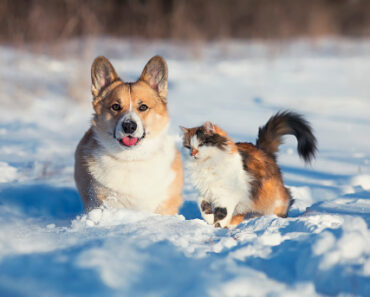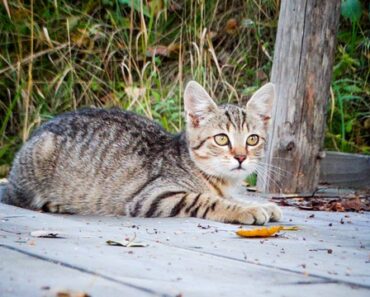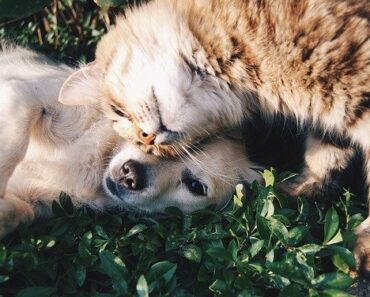
Taking care of an unweaned kitten is difficult and time consuming. You will have to be armed with courage. It is strongly advised to turn to a veterinarian, who will give you advice adapted to your situation. A clinical examination of the kittens may be necessary in order to rule out any malformation or health problem that could have justified its abandonment by the mother. If the kitten is weak or not very vigorous, it may require a stay in an incubator and a sample feeding, which cannot be done in your home. But if the kitten is in good health and you decide to take care of it, then it will be necessary to offer it an appropriate environment, take care of its food, and take care of its education and socialization.
Make sure the kitten is colostrally well taken care of
At birth, the immune system of kittens is functional, but it is immature. The kitten, which was until then in a sterile environment, comes into contact with the outside environment without antibodies. He therefore benefits from those produced by his mother in the colostrum, which is the first secretion of the udder after giving birth. Most of the colostrum is taken during the first 24 hours of life, and is completely finished after 48 hours.
If the kitten cannot suck at all at birth, or if the mother dies during delivery or in the following hours, the kitten cannot receive colostrum and therefore becomes very vulnerable to germs in the environment. Therefore, it is necessary to contact your veterinarian very quickly in order to consider the administration of an artificial colostrum (ideally within 15 hours after birth).
Making a cozy nest for a young kitten
The young kitten needs a comfortable, dry, warm, and easy to clean nest. The ideal is a plastic box with walls high enough so that it cannot escape. You can cover the bottom of the box with towels that will need to be changed regularly. Newborns are particularly sensitive to the cold, firstly because they are almost motionless and do not warm up by moving, and secondly because their body is still unable to shake to keep warm. The nest should therefore be placed in a room with a minimum temperature of 22°C. When there are several kittens, the kittens stick to each other to get warmer. If alone, the kitten should be placed near a radiator whose temperature is around 30°C. Another possibility is to place hot water bottles wrapped in a towel in the box, but they must be changed regularly to remain effective.
During the first month, the box should be placed in a quiet room, away from noise and children. Especially during the first two weeks of its life, the kitten spends 90% of its time sleeping and eating.
Feeding an unweaned kitten
The orphan kitten must be weighed once or twice a day, at least during the first 2 weeks: if he doesn’t gain weight, or if he loses weight, this is not normal and should alert you. At 2 days, he weighs about 110 grams while at 28 days he weighs about 450 grams. Around the age of 4 weeks, the weight gain becomes less important: this is the beginning of weaning, which will end around 8 weeks.
Before weaning, the kittens have an exclusively milk-based diet. In the absence of breast milk, a substitute milk may be used. It is most often powdered milk, whose composition is very close to that of cat’s milk. This is the preferred solution because this milk covers the kitten’s nutritional needs well and is easy to store. In all cases, cow’s milk is to be avoided: it does not provide enough energy and may cause digestive problems.
Before the age of 3 weeks, kittens are not able to lap, so you will have to provide you with a bottle. The cleanliness of the bottle and the perfect conservation of the food are two very important points: it is absolutely necessary to avoid the proliferation of bacteria because the digestive balance of the newborn kitten is fragile. The bottle’s teat must allow the milk to ooze, without flowing too quickly. The kitten must be placed on its stomach, without having to stretch its head too much to drink. This position is important to limit the risk of false swallowing.
The frequency of meals decreases with age. At birth, the kitten should be fed an average of 6 to 8 times a day. It is important to warm the milk to a temperature of about 38.5°C.
From 3 weeks of age, the kitten should be able to begin to lap the milk in a bowl. Around 4-5 weeks of age, you can add kitten kibbles to his milk, so that he gradually gets used to eating solid food. As you go along, increase the amount of kibble and decrease the amount of milk. Remember to offer the kitten as much fresh water as he wants.
Education of the young kitten
As a “surrogate mother”, you will have to teach the kitten to be clean. The first 3 weeks, the kittens must be stimulated to do their business. To do so, after each meal, massage the ano-genital area with a cotton pad soaked in warm water. This can be done on a newspaper for example, but away from the sleeping area so that the kitten gradually learns to be clean.
In order for him to become an adult cat with normal behaviour, psychologically balanced, the kitten must learn to live with his fellow cats. Normally, the mother teaches her kittens to hunt and to control their aggressiveness. By moving away from them gradually, she teaches them independence. This is why it is preferable that the newborn kitten stays in contact with a fellow kitten. If this is impossible, it will still be necessary to introduce him to other cats from the age of 4 weeks. You will also have to gradually detach yourself from him by encouraging play behaviour at a distance, using toys that simulate prey. It is preferable not to encourage him to play with your hands, and to bite them. In this way, you reduce the kitten’s risk of later developing behavioural problems such as aggression.






